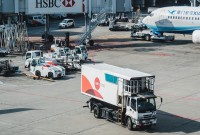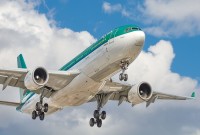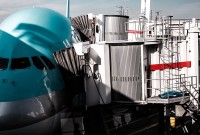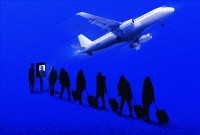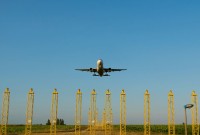- Home
- Business Processes
- Industry Knowledge
- Aerospace Industry
- Automotive Industry
- Banking Domain
- BFSI Industry
- Consumer/ FMCG Industry
- Chemicals Industry
- Engineering & Construction
- Energy Industry
- Education Domain
- Finance Domain
- Hospitality Domain
- Healthcare Industry
- Insurance Domain
- Retail Industry
- Travel and Tourism Domain
- Telecom Industry
- Leadership Skills
- eLearning
- Home
- Industry Knowledge
- Aerospace Industry
- Aerospace Industry - The Competitive Landscape
Aerospace Industry - The Competitive Landscape
This article provides an overview of the competitive landscape of the aerospace industry. Read how the compaction is shaped up across the US and the globe, followed by a detailed discussion of the top 5 players in the sector in terms of revenue.
Non-U.S. firms dominate the Regional Jet market and participate in the GA market. The large commercial jet aircraft manufacturing sector is a Boeing and Airbus duopoly. While aerospace firms in Europe and Japan have long driven competition with the United States, Russia and China have not, until recently, been strong competitors in the international market. Over the years, aerospace firms from several non-traditional aircraft manufacturing nations have attempted to enter various parts of the international commercial aircraft sector. With the exception of some GA products, these attempts have largely been commercial failures.
The products sold by companies in this sector are highly specialized and expensive and the competition is also high in this segment. There are various challenges and barriers that make is almost impossible for new players to enter this market.
Companies in the military aerospace products manufacturing sector face medium, steady competition. The US dominates this sector, but production continues to increase in other countries. Another barrier to entry into this sector is the strict regulations governing defense manufacturers.
Key Competitors:
Globally, the top five competitors in the aerospace and defense industry by revenue are discussed below:
1. The Boeing Company:
Boeing is the world's largest aerospace company and leading manufacturer of commercial jetliners and defense, space, and security systems, founded in 1916 in the Puget Sound region of Washington State. A top U.S. exporter, the company supports airlines and U.S. and allied government customers in 150 countries, with total revenue of $68.7 billion in 2011. Boeing products and tailored services include commercial and military aircraft, satellites, weapons, electronic and defense systems, launch systems, advanced information and communication systems, and performance-based logistics and training. With corporate offices in Chicago, Boeing employs more than 170,000 people across the United States and in 70 countries.
Boeing is organized into two business units: Boeing Commercial Airplanes and Boeing Defense, Space & Security. Approximately 60% of Boeing's sales originate in the Americas and the US government accounts for about 80% of the company's space and security revenues.
2. European Aeronautic Defence and Space Company (EADS):
The EADS Group is a global leader in aerospace, defense, and related services, employing around 133,000 people at more than 170 sites worldwide. EADS is a European industrial flagship which unites the capabilities of four market leaders: Airbus, Astrium, Cassidian, and Eurocopter. EADS is the largest supplier of aerospace, defense, and related services in Europe.
EADS includes Airbus as the leading global manufacturer of the most innovative commercial and military aircraft. Its commercial product line comprises aircraft that range in size from the roughly 100-seat single-aisle A318 to the over 500-seat A380 widebody aircraft. Today, Airbus consistently captures about half of all commercial airliner orders.
3. Lockheed Martin Corporation (LMT):
Headquartered in Bethesda, MD, Lockheed Martin is a global security and aerospace company that employs about 123,000 people worldwide and is principally engaged in the research, design, development, manufacture, integration, and sustainment of advanced technology systems, products, and services. It recorded sales of $46.5 Billion in 2011.
As a global security, aerospace, and information technology company, the majority of Lockheed Martin's business is with the U.S. Department of Defense and the U.S. federal government agencies. In fact, Lockheed Martin is the largest provider of IT services, systems integration, and training to the U.S. Government.
The remaining portion of Lockheed Martin's business is comprised of international government and some commercial sales of our products, services, and platforms. It is among the world's top military contractors, with most of its sales coming from the US government. LMT's customers include the US Department of Defense, the US Army, and the US Navy.
4. Airbus S.A.S.:
Airbus SAS is an aircraft manufacturing subsidiary of EADS, a European aerospace company. Based in Blagnac, France, a suburb of Toulouse and with significant activity across Europe, the company produces more than half of the world's jet airliners. Airbus began as a consortium of aerospace manufacturers, Airbus Industrie. Consolidation of European defense and aerospace companies in 1999 and 2000 allowed the establishment of a simplified joint-stock company in 2001, owned by EADS (80%) and BAE Systems (20%). After a protracted sales process, BAE sold its shareholding to EADS on 13 October 2006.
Airbus has traditionally been in direct competition with rival jet manufacturer Boeing. In addition to its commercial jets, Airbus is expanding into the military transport aircraft sector.
5. Northrop Grumman Corporation (NOC):
Northrop Grumman Corporation is a leading global security company providing innovative systems, products, and solutions in aerospace, electronics, information systems, and technical services to government and commercial customers worldwide. A premier provider of manned and unmanned aircraft, space systems, missile systems, and advanced technologies. Key products include Global Hawk, Fire Scout, and UCAS-D unmanned aircraft systems; B-2 stealth bomber; E-2D Advanced Hawkeye; Joint STARS targeting and battle management system; James Webb Space Telescope; Advanced EHF communications payload, and Space Tracking and Surveillance System.
Future Outlook:
The future outlook for competitive landscape predicts even increased global competition in the aerospace industry. There is a huge possibility of new low-cost competitors entering the market, including the emergence of possibly strong aerospace manufacturing centers in China and Russia.
Suggested Reading and Resources
Related Links
You May Also Like
-
Civil Aerospace: Maintenance, Repair & Overhaul (MRO)
This subsector under the civil aerospace industry includes the maintenance, repair, and overhaul (Known as MRO) of civil aircraft and aircraft components. This includes line and heavy maintenance of civil aircraft, as well as repair and overhaul of all parts of an aircraft, including engines, electronic components, and avionics, instruments, and aircraft structures.
-
Civil Aerospace Sector - Sector Profile
In this article, we will discuss the four important sub-sectors of the Civil Aerospace Sector namely “Civil Aircraft Manufacturing”, “Commercial Avionics”, “MRO” and “Commercial Simulation & Training”.
-
Application of Aviation in Military – A Short History
Aerospace is an industry that has a history of about a century in the defense space. This article discusses how the historic flight of the Wright brothers in 1908 gave birth to the aerospace defense industry that today employs 850K people in the US only.
-
Civil Aerospace: Civil Aircraft Manufacturing Industry
This article discusses sectors within the Civil Aerospace Sector and its subsectors, products, and services. This article provides an overview of the definition, industry products, industry activities, and global locations.
-
Challenges in the Aerospace and Defense Industry
New market dynamics are dramatically changing the way A&D companies serve their customers, collaborate with partners, and take ideas and solutions to the market. Given below are several vitally important challenges that are currently confronting the aerospace and defense industry and strategies to mitigate them.
-
Civil Aerospace - Commercial Simulation and Training
Training people how to operate and maintain today’s sophisticated aircraft as well as on-board and ground support systems can be very complex and costly. To be effective, the training environment must accurately simulate the features and capabilities of the actual systems in a wide range of operating scenarios. Commercial modeling, visual simulation, flight simulation, and computer-based training are the key methods used by this subsector.
-
Civil Aviation Sector – A brief History
The civil aviation sector has transformed itself during the last hundred years. There has been massive technological development in passenger traffic and comfort and now the civil aviation industry accounts for approximately 30% of the overall aerospace industry. A brief account of civil aviation history is presented in this article.
-
Key Sectors of Aerospace and Defense Industry
Understand the categorization of the aerospace industry to various sectors based on the services it currently provides. Understand the key constituents under these sectors and activities under each of these sectors.
-
Aerospace Industry: The Business Model
In this article, we will discuss the value chain of the Aerospace Industry and will define the generic business model to understand the key process areas in the aerospace industry. This will provide you with a basic understanding of key activities in the industry.
-
Aerospace Industry - The Competitive Landscape
This article provides an overview of the competitive landscape of the aerospace industry. Read how the compaction is shaped up across the US and the globe, followed by a detailed discussion of the top 5 players in the sector in terms of revenue.
Explore Our Free Training Articles or
Sign Up to Start With Our eLearning Courses

About Us
Learning
© 2023 TechnoFunc, All Rights Reserved


